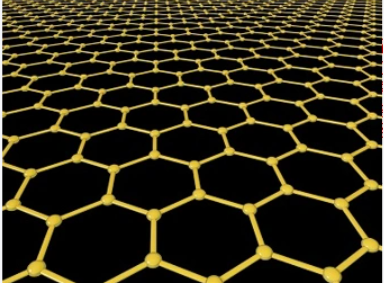Graphene and the Future of Antibacterial Coatings: Smart Materials for Safer Cities
Introduction
As cities become denser and more interconnected, public health infrastructure must evolve beyond traditional sanitation. The next frontier? Smart materials that passively combat microbes. Among these, graphene and its derivatives, especially graphene oxide (GO), stand out as transformative materials enabling durable, chemical-free antibacterial protection in urban environments.

This article explores how graphene is positioned to revolutionize surface hygiene across public transit, healthcare, schools, and smart buildings—paving the way for cleaner, safer, and more resilient cities.
1. Why Graphene for Urban Hygiene?
Graphene’s unique structure—a single layer of carbon atoms in a hexagonal lattice—gives it remarkable properties that make it ideal for antimicrobial coatings:
| Property | Benefit for Hygiene Applications |
|---|---|
| High surface area | Enhanced interaction with bacterial membranes |
| Sharp edges (GO sheets) | Physically disrupt microbial cell walls |
| Oxygen-containing groups | Chemical oxidative stress on pathogens |
| Strong adhesion | Durable binding to metals, plastics, and glass |
| UV resistance | Stability in outdoor and high-light environments |
Unlike volatile chemical disinfectants, graphene-based coatings offer long-lasting, passive protection with minimal environmental impact.
2. Application Areas in Smart Cities
A. Public Transportation
GO coatings are already in use or pilot stages on:
-
Elevator buttons and ticket machines
-
Subway handrails and poles
-
Bus seating armrests
-
Escalator railings
These high-touch surfaces are major transmission points in cities. Graphene coatings help interrupt contact infection chains in transit hubs.
B. Smart Hospitals and Clinics
Future-ready medical centers are embedding graphene materials in:
-
Wall panels and bedrails
-
Surgical equipment carts
-
Touchscreen control panels
Combined with UV-light self-cleaning systems or real-time bacterial sensors, these coatings form the foundation of “smart disinfection networks.”
C. Schools and Educational Campuses
Urban schools, with dense populations and shared materials, benefit from:
-
GO-treated classroom furniture
-
Antibacterial chalkboards and lab counters
-
Library book covers with antimicrobial laminates
New smart desks may soon integrate graphene-infused surfaces with embedded temperature and pathogen sensors.
D. Commercial and Government Buildings
From office buildings to city halls, GO coatings are finding use in:
-
Door handles and access control buttons
-
Conference table surfaces
-
Public restrooms and shared kitchens
These coatings integrate easily into existing maintenance cycles and reduce dependency on harsh chemical disinfectants.
3. Advanced Technologies: Beyond Coating
Graphene is at the center of emerging hybrid systems that blend materials science and electronics:
A. Sensing + Disinfection Platforms
-
GO coatings that change conductivity or color when bacterial levels rise
-
Coupled with app-based alerts for building managers
-
Automated triggers for localized UVC or heat disinfection
B. Graphene + Photocatalytic Systems
-
Integration with titanium dioxide or zinc oxide for light-activated disinfection
-
Daylight or indoor LED systems power the coating’s microbicidal action
C. Smart Wearables and Touchscreens
-
Self-sanitizing phone screens and wearable surfaces
-
Personal face shields or helmets with GO-laminated interiors
-
Smart cards with built-in antimicrobial functionality
4. Design and Aesthetics Considerations
Unlike bulky plastic guards or chemical sprays, graphene coatings:
-
Are ultra-thin and transparent
-
Do not alter the appearance of the base material
-
Maintain tactile comfort (non-sticky, matte finishes)
-
Can be sprayed, dipped, or laminated during manufacturing
This makes them suitable for design-conscious buildings and consumer products where appearance matters.
5. Regulatory and Certification Developments
To support wider adoption, cities and manufacturers are turning to:
-
International Standards: ISO 22196, ASTM E2180, EN 13697
-
China-Specific Guidelines: National Testing Method for GO-based Antibacterial Surfaces (draft under CNIS)
-
Material Declarations: Labeling treated surfaces in public spaces
Certification helps ensure public trust, particularly where nanomaterial skepticism exists.
6. The Role of Data and AI
Smart coatings are becoming part of city-wide hygiene data platforms:
-
Graphene-based sensors log microbial activity in key zones
-
Data feeds into urban dashboards for outbreak prediction
-
AI recommends cleaning schedules, rerouting, or zoning adjustments
This shift turns static coatings into living systems, embedded in the Internet of Hygiene Things (IoHT).
7. Made in China: Real-World Innovations
Chinese cities are leading with real deployments:
| Project | City | Description |
|---|---|---|
| Smart Bus Station Pilot | Wuhan | GO coatings + air quality sensors on benches and poles |
| Community Health Center Retrofit | Chongqing | Antibacterial paint with GO applied to waiting areas |
| University Lab Surfaces Initiative | Shanghai | Desks with hybrid GO-copper antibacterial systems |
| Airport Hygiene Optimization Program | Guangzhou | Self-cleaning kiosks with transparent GO films |
Supported by local governments, these projects are expanding through public-private partnerships.
8. Looking Forward: A Blueprint for Safer Urban Living
Graphene is no longer a futuristic material—it’s an enabler of the next generation of health-conscious city infrastructure.
As the climate warms and global travel intensifies, infectious risks will grow. Passive, embedded antimicrobial systems will be essential for urban resilience. With graphene at the core, cities can evolve into living organisms that protect their inhabitants without excessive chemical load or maintenance burden.
Conclusion
Graphene’s emergence in antibacterial coatings signals a paradigm shift in how we design public health infrastructure. Beyond simple hygiene, these materials represent a smarter, more sustainable approach to cleanliness—an approach that works silently, continuously, and intelligently.
As urban populations grow, graphene will not just coat surfaces—it will redefine them.

